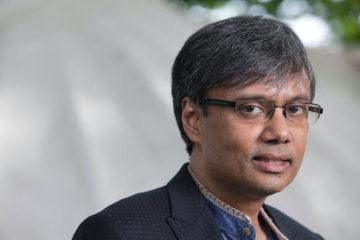Ivan Hewitt in Prospect Magazine:

One of the things that attracts a keen but lazy enthusiast for Indian music like me is that the sounds and the elaborate ritual of an Indian classical concert never lose their mystery. I am still puzzled by such things as the disbelieving shake of the head and sigh with which proper devotees greet a particularly expressive moment. What does that actually signify? What is the role of the almost-inaudible instrumentalist who sits next to the star soloist, and why does he not play his modest little drone in time with everyone else? What makes Raga Bhairavi a “morning raga,” when to a western ear it seems just as redolent of evening melancholy as an evening raga like Durga? And what is a raga anyway?
The reason I’ve never troubled to find more than a cursory description of these things is that the mystery is part of the enjoyment. I don’t really want answers, which is why I hesitated before reading this book. But then I remembered the special pleasure of Amit Chaudhuri’s novels, where the subtle weave of relationships between people and sights and smells is gently evoked in a way that leaves their essential unknowability intact. One apprehends them like a scent, rather than a piece of discursive knowledge.
Chaudhuri achieves a similar miracle in Finding the Raga—which isn’t to say you won’t learn many specific things, such as the fact that Raga Todi has flattened second, third and sixth degrees. But this is no text book. He tells us that there are literally thousands of ragas, and many rhythmic patterns or talas, but focuses on just a few. He spends several pages on a rhythmic cycle called teentaal, a recurring pattern of 16 beats. To the western ear that simply sounds like four bars of four-four time. Chaudhuri shows how when combined with a system of faster “triplet” beats this iron regularity is overlaid with ambiguity, so to land decisively on the first beat of a cycle becomes a challenge. He leads us gently towards different a way of hearing and playing, and through them to different ways of feeling and knowing.
Chaudhuri is well placed to write such a book. He’s a performer, often leading his own group which combines Indian elements with blues and jazz idioms, and is the son of a well-known classical singer. During his teens Chaudhuri encountered rock music, and for a while seemed more in love with that than with his own heritage. He forsook the Indian accordion for a guitar, and tried to turn himself into a singer-songwriter on the lines of Joni Mitchell or Neil Young.
More here.
